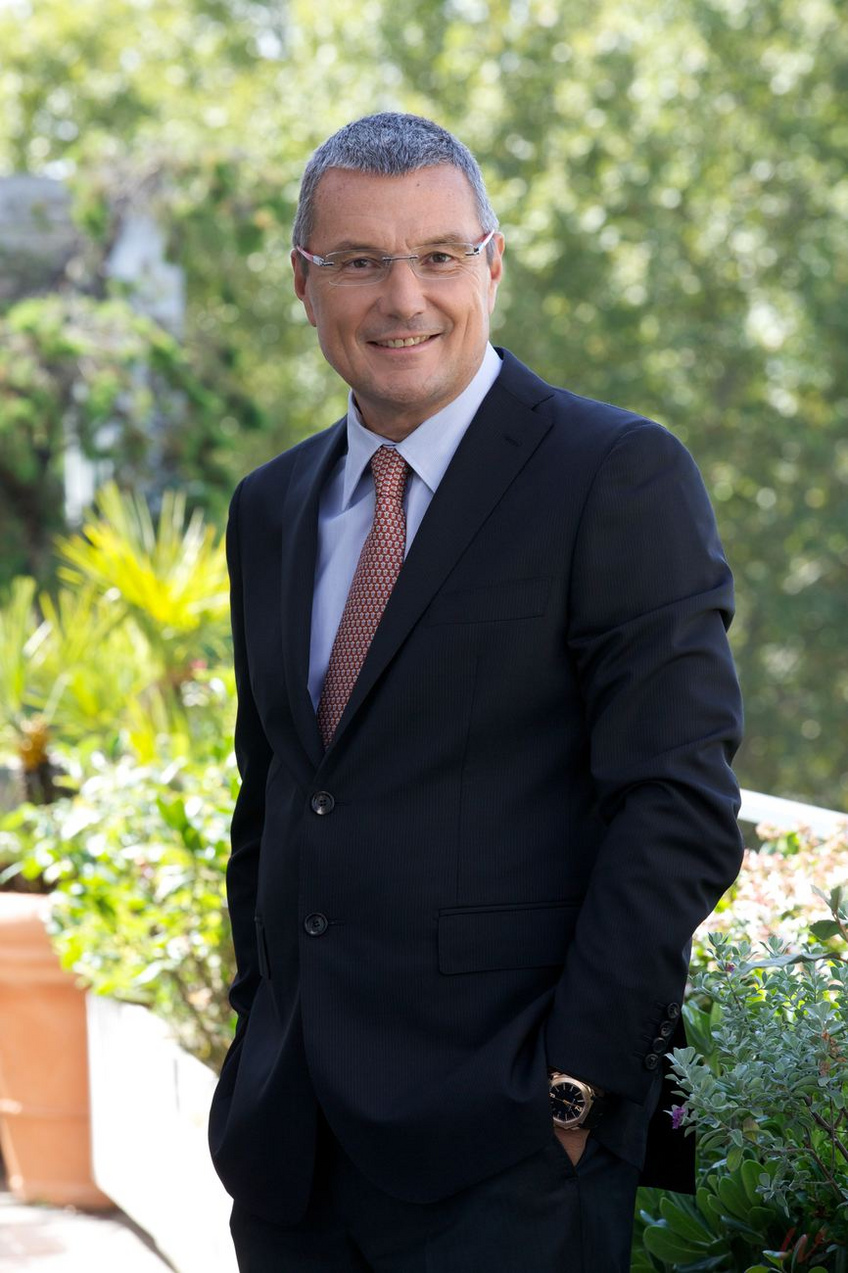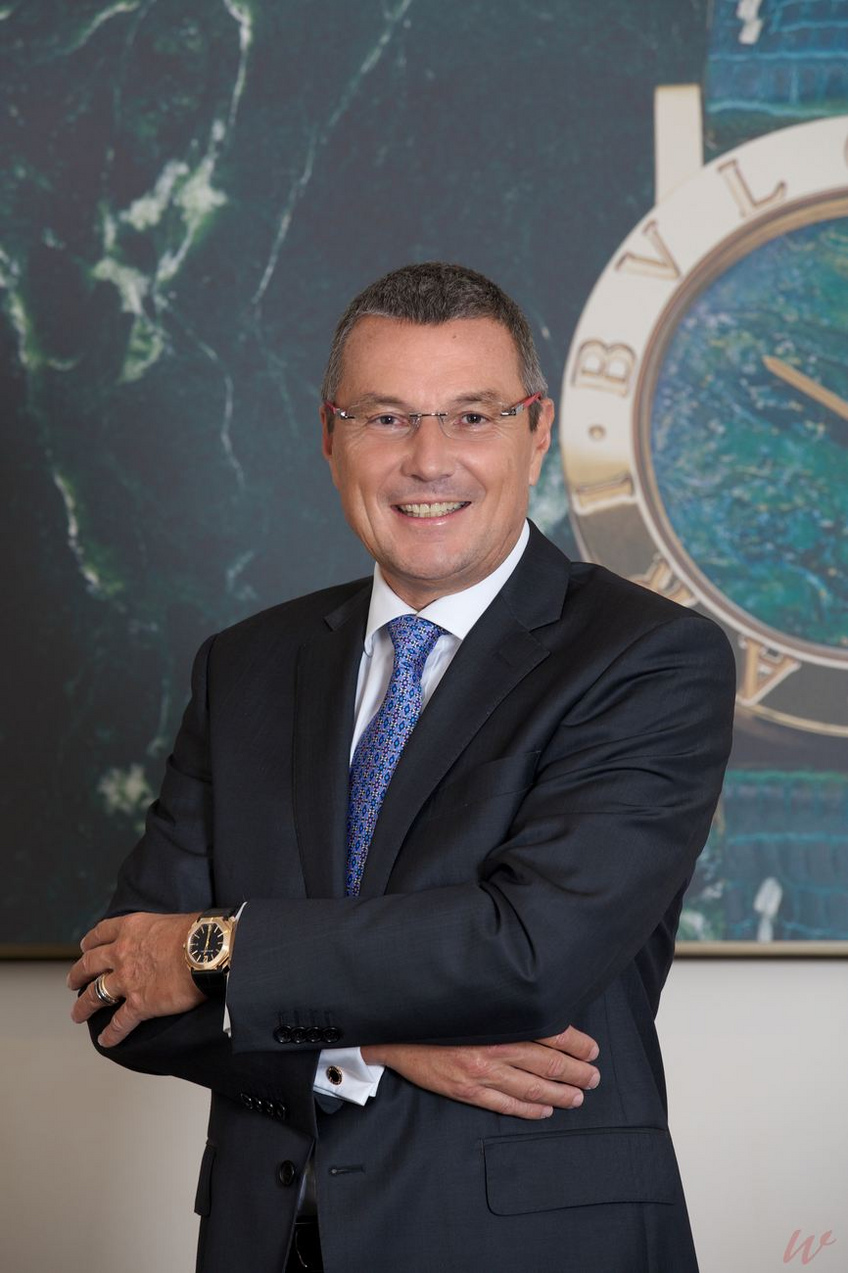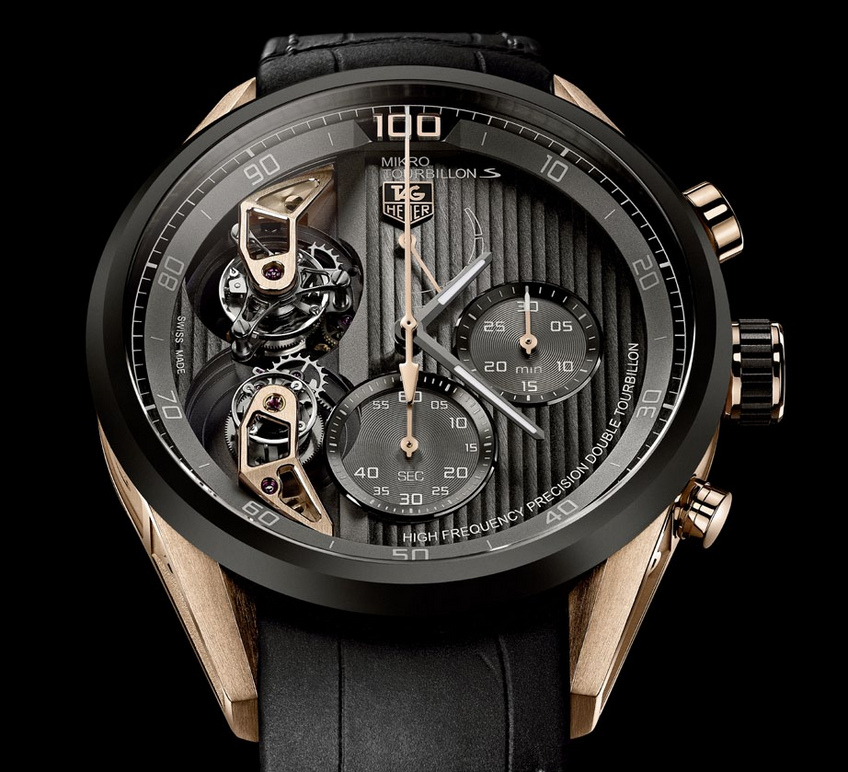

Jean-Christophe Babin: Molto Veloce
In January 2013, two weeks before his announcement as CEO of Bvlgari, Jean-Christophe Babin, CEO of TAG Heuer at the time, explain in a rare interview how and why TAG Heuer has pushed watches’ frequency from 5 to 500Hz!
Jean-Claude Babin, the Maestro of Haute Horlogerie and high frequency
The Maestro who orchestrated the rise of TAG Heuer into Haute Horlogerie wonderland, as a virtuoso of the most cutting-edge watchmaking technology, narrates for us the adventures of his team in their research into high frequency pushed to the extreme!...
First published on veryimportantwatches.com
Constantin Stikas: First of all, are we able to define what the meaning of high frequency is today?
Jean-Christophe Babin: TAG Heuer goes up to 1000Hz. We make from 4 up to 1000Hz. On average, we make 10 times faster than what used to be considered as high frequency and we can go up to 200 times 5Hz, reaching 1000Hz! Thus, TAG Heuer is not the high frequency specialist, but the very high frequency specialist!

CS: What do we gain with high frequency?
JCB: What high frequency offers us, is the division of time into infinitesimal units. Mastery of the hundredth, of the thousandth and of the tenthousandth, which corresponds to the mastery of extreme precision. Because if you are able to break down a second into a hundred hundredths, a thousand thousandths or two thousand two-thousandths, in a way you have the most precise second in the world. The essence of high frequencies is the essence of mastering time.
CS: What is at risk with a high frequency watch?
JCB: High frequency, like in Formula 1 engines, consumes more than low frequency. Therefore it is clear that the great challenge posed by high frequency is the power reserve. TAG Heuer, conscious of this challenge, opted from the outset, with the Calibre 360 in 2005, and afterwards with the Mikro-family, Mikrograph, Mikrotimer, Mikrotourbillon and Mikrogirder, for dual chains. These were used for separating the standard time (hour, minutes, and seconds) power reserve, from the very small time interval power reserve, thanks to their two separate barrels. Thus, the TAG Heuer system is the system reconciling the marathon with the sprint. It is very difficult for a sprinter to run a marathon, he will collapse from exhaustion. And a marathon runner will be very slow running a sprint. TAG Heuer took note of that and so the hour-minutes-seconds part, is like a marathon runner who never stops, since at 4Hz there is no problem posed by consumption, and then, when you need to run a sprint you go up to 50 or 500Hz, with a power reserve that will be weaker but that will have no chronometrical impact on the accuracy of the hour, minutes and seconds. Because the problem of high frequency is not solely that it consumes a lot of energy, but that it intervenes with the hour, minutes and seconds indication’s chronometry. By contrast, using a dual chain, there is no negative influence on chronometry. That is one reason for which a watch with a chronograph cannot obtain the COSC. Because from the moment you start the chronograph on a single-barrel watch, you completely deregulate the chronometry of the movement of the watch and you also influence the power reserve, which will pass from 50 hours to 2 hours.
CS: Man has conquered 4Hz, he remained at 5Hz for more than four decades, and then TAG Heuer achieved 50Hz, 500Hz two months later and 1000Hz one year later!...
JCB: Are there any limits to watchmaking? Are there any limits to the projects of TAG Heuer’s R&D Department?
By definition, there are no limits to innovation. The human-being is fashioned in such a manner that he is always imbued with a curiosity for venturing further and exploring new technologies. Moreover, it is thanks to the limits of the Mikrotimer that we reinvented the regulator with the micro-blades that allowed for the creation of the Mikrogirder. In fact, with the Mikrotimer we came to the realisation that, from 500-600Hz and up the consumption began being very high and we especially began experiencing a loss in precision. These are the limits of Huygens’s system. Huygens’s system is extraordinary at 4-5Hz and good at 50Hz, but it reaches its limits in the vicinity of 500Hz. And, however, in the Mikrotimer, let’s not forget that there is a set that does not even have a balance. Because there is such little amplitude whereas the balance normally acts as the corrector of the amplitude. Therefore, on a standard movement you have 270 degrees of amplitude and you have a balance for the return, on the Mikrotimer we have 20 degrees of amplitude and we no longer have any need for a balance. Therefore, the set of the Mikrotimer is extreme.

However, it remains a classical set, since there is a spring. But that is until 500Hz. In order to go higher than that, we were obligated to think differently, and that was how we came back to the principle of D’Alembert. His principle of the violin cord, namely of vibrating waves.
That is why I have stated that there are no limits to innovation. We reached a limit to innovation with the 500Hz, which is the limit of the system of Huygens. And then, by using D’Alembert’s principle on vibrating waves, we went up from 5 to 1000Hz in a single step. Now we know that, with vibrating girders, we can reach at least 1000Hz, even higher.
CS: Maximilian Büsser stated in his interview that “…after the ‘70s and the invention of quartz, the mechanical movement has ceased to have any reason for existing… In Watchmaking, we can state that in the era of the TGV we are making steam engines. Therefore, when we move from 5 to 6, 8 or 10 Hz, (and I am not talking about 500 or 1000Hz), it is the same as if we were straining to make a steam-powered engine that is 5 or 10% faster than its counterpart…” What do you think about this?
JCB: I believe that, in the automobile industry, the electrical engine has existed for more than 100 years, while the internal combustion engine has existed for more than 150 years. And, finally, the internal combustion engine remains the one largely predominant today. We have witnessed that, in the progress made by the best engineers in internal combustion engines, we have attained consumptions of 2 to 3 litres per one hundred kilometres. Thus, ultimately today the electrical engine is a big ‘question mark’. The famous erupting motor that has existed for a long time thanks to innovation today, it is always by eruption, but it has an energy performance that no one could have imagined 20 years ago.
The mechanical movement is more or less like that: yes, it is mechanical! There is an horological chain, which conceptually has remained the same for 300 years. But the output of this movement today is incomparable to what it was 30 years ago.
Even the first automatic chronograph of Heuer from 1969, the Chronomatic 11, when compared against the 1887, it is like comparing the cars of the ‘70s to the cars of today. They consumed a lot more; they were a lot thicker and much less reliable. Yes, concepts have not changed, similarly to the automobile industry. But reliability, precision, energy efficiency, all these have immensely evolved.

CS: Jean-Pierre Musy, Patek Philippe Technical Director, replied to the remark by Max Büsser: “When we see high-quality watches, they have a chronometrical bulletin, COSC values, meaning –6 to +4. There is a daily deviation of 10 seconds! In any case, it is significant, 10 seconds per day, this amount to nearly one minute every minute! Do you believe that there is nothing to be done? I believe that there is something to be done! There is work to be done in order to improve this situation. We cannot allow ourselves to make watches that have upwards of a one minute error margin within the space of a week! The mechanical watch must be more accurate than that!” What is your opinion about this?
JCB: We can attempt to correct daily variation ad infinitum. It is primarily a question of adjustment. But I believe that there will never be a mechanical watch that will be as precise as a quartz one, especially in regard to daily variation. By contrast, it is primarily reliant on the adjustment. We can decrease the error margin to less than one second per day. Subsequently, can we decrease it to one hundredth of a second per day? I do not think so. Now, is that so serious? Knowing that people owning mechanical watches today, they usually have more than one and will therefore need to reset the time numerous times per month, this becomes a bit academic. It is as though a Ferrari, which has 300km of autonomy, but no one cares since no one will do the trip Zurich-Hamburg in a Ferrari. You mainly see people touring the Alps in a Ferrari. Thus, it would be of no use to have 1000km autonomy in a Ferrari. And must put the problem in perspective and remember that quartz has less deviation, but it is not noble. Whereas the mechanical watch is noble. It is 300, 400, 500 components that are very small in size and that have been assembled together. Aesthetically it is admirably beautiful and if it has an error margin of 1, 2, 3, 4 seconds per day, it is not so serious. We frequently have 3-4 watches; in any case we often have one stopped watch that we need to adjust. And, that way, they are always set to the right time.
CS: Until now, we have seen 4 magnificent Concept Watches. What does the everyday watch gain, or what is it capable of gaining, from this experience and from the acquired know-how?
JCB: High frequency already represents the ultimate mastery in the operation of a movement, regarding the spring, the balance and the escapement. Therefore, it is clear that if you manage to mastery 50 or 500Hz, you are in a position to much better understand the operation of your 4 or 5Hz movements. From brands like TAG Heuer, we can imagine future optimisations to traditional sets. Not necessarily using silicon, because in any case that is more an issue of marketing, but by using our imagination. For example, on the Pendulum we have made a movement without a spring. On the Mikrotimer we have made an movement without a balance. We cannot remove the balance, the spring and the escapement all at once, because there would be nothing left.

But we see that by working with high frequency we can manage to rethink certain components which, until 4 or 5 years ago, were considered obligatory. Until 2010 we used to say that a spring is necessary. With the Pendulum we demonstrated that this is not the case. Until 2011 we used to say that a balance is necessary. With the Mikrotimer we demonstrated that this is not the case. Finally, we stated that a spring and a balance are both necessary. With the Mikrogirder we demonstrated that this is not the case. The interest of high frequencies is that they lead the mechanical escapement into new territories that will have applications for lower frequencies as well. The Mikrogirder, it was initially at 1000Hz, but there are probably very good applications for it at 50Hz, that would provide the same degree of precision as the escapement we are using here, but probably with a lot more power reserve. Because, effectively, the advantage of the vibrating micro-blade is that it has very low energy consumption compared to traditional sets. Not only does it go up to higher frequencies, but it has much lower consumption, because in effect if we speak about the Mikrotimer it has an amplitude of 20 degrees, but if it is with micro-blades it has an amplitude of 3 degrees. And the weaker the amplitude, the less important consumption becomes. Thus, the application of 1000Hz to 50Hz can, in theory, permit attaining 50Hz, with a power reserve that is three or four times more important. We see that all this research work can have very interesting applications.
CS: During the presentation of the Mikrotimer someone asked you if the eye, the hand and the brain are able to follow such an unimaginable performance. What do you think?
JCB: So, as for the hand, yes, because in effect the human being, at the cerebral level, has the tendency to apply the same force for short periods. If I start and then I stop a chronograph my finger –and this has been confirmed by lab tests– applies the same force. Thus, the flaw that I introduced on START, I will correct it on STOP. So, if you like the famous debate “Why the thousandth, the ten-thousandth or the tenth?” knowing the finger is inaccurate, it is true in theory, but unsubstantiated in practice. Because every time that I press the START button, I am introducing a flaw into the system, and when I click on STOP I am correcting this flaw. Therefore, at the level of the hand, it is the hand that is the corrector. Especially when we are talking about short spans of time.
Now, for the eye. It is clear that above 50Hz, the eye does not see anything. But that is not important, what is important is that when we stop it, that the indication is readable. Seeing the hand turning is not what is important. What is important is that when you stop the chronograph, that you can read the exact indication. What is probably even more important than frequency and precision in the Mikrograph, Mikrotimer and Mikrogirder models, it is the legibility. And there is nothing simpler than if I stop a Mikrograph here, that I know that I am at 89 hundredths of a second. TAG Heuer is the brand that was not only the most innovative in high frequency, but especially that was also the most creative mechanically, in order to have an architecture in its movements that would facilitate the legibility of the indications. Up until the tenth of the second, it is easily readable. But from the hundredth onwards, it becomes complicated. At the thousandth, there are three digits. At the ten thousandth, there are four digits. Therefore, the entire Art of high frequency consists, beyond precision and frequency itself, in being capable of having a construction of the movement that will permit reading the ten thousandth, or the thousandth or the hundredth. And it is in this domain that TAG Heuer was certainly more pioneering than in frequency itself. Jack Heuer always said “there is no interest in being accurate if one cannot be legible”.
CS: In TAG Heuer’s research one encounters a synthesis of the innovative watchmaking spirit with the practical dimension of perfection in the domain of race-car event timekeeping. Can you specify the benefits brought to timekeeping by watchmaking know-how?
JCB: At the beginning, there was a very close relationship, since car-race timekeeping was done mechanically. We had wrist-worn chronographs and Stop Watches. As of the ‘60s, specifically in 1966 with the Microtimer, we pass into the electronic era. And we pass from the hundredth to the thousandth of a second. And that was when the paths separated. Today, TAG Heuer is among the world leaders in sport timekeeping: automobile, equestrian, skiing etc., but with devices that are exclusively digital. And that have no direct horological application. Thus, if you want to make a digital chronograph like the one we made in 2002, the Microtimer, will be suitable for that purpose. Otherwise, sports timekeeping and the mechanical watch are two completely different worlds.

CS: Switzerland, to most people, is a ‘slow’ country. However, the CERN is located in Switzerland and today we have seen watchmaking regularly beating the high frequency record… What is your opinion on this?
JCB: I am not convinced that Switzerland is ‘slow’. Switzerland is, above all, a coherent country. And, from time to time, we confuse coherence and slowness. We have a tendency to think that a country that moves about a lot is dynamic. We are dynamic if we consistently move in the same direction. And if we move in many different directions, we are dispersive. Switzerland is a very determined country, with very specific objectives at the technological level, at the industrial level, at the political level, at the institutional level and that remains very coherent. We tend to confound coherence with slowness, but that is not ‘slow’, it is only efficient.
Watchmaking, in particular, is one of the most dynamic sectors in the world. Even if it was founded on Huygens’s principles three centuries ago. And this does not impede Watchmaking industry from being one of the most innovative in the world and presenting the highest growth index in the luxury goods world. This means that is poses greater interest than the other sectors, above all through the power of its creativity.
CS: What will be your next creation in the field of high frequencies?
JCB: Now the next step is high frequency in high-tech materials. Thus, it might be the theme of the following year. Because we have seen that this year, TAG Heuer, with its Carbon Matrix Composite, has also introduced new materials and not exclusively a new movement.
CS: What is your personal relationship to speed?
JCB: I adore it. I am one of those people who are ‘speed-aholics’. Thus, I am really fond of speed in skiing, I am really fond of speed in windsurfing, on a catamaran, during a TAG Heuer Formula 1 Driving Experience, I am very fond of speed in Formula 1 racing, personally I really like everything that is fast.
CS: Do you think that a speed limit should be imposed on motorways and, if yes, at how many km/h should it be set?
JCB: I believe that there are experts, specializing in car safety technologies. They specify the reasonable speed limits. I am the first to say that on a motorway, for example, more than 120km/h is madness. Because, if you talk to engineers, the smallest accident, from 120- 130 and up, there is no longer any safety system that can keep you alive. Until 60 you risk practically nothing if you have properly fastened your seat-belt. Between 60-120 you start being exposed to significant risk and above 120, even if you have fifteen air-bags and shock-absorbers... The speed limits that are currently in effect are scientifically reasonable ones, if the aim is to eliminate casualties and injuries. If you want to drive at high speeds, go to a race-car circuit, rent a one-seater, twenty years ago this option was not available, now they are everywhere. If you want to drive fast, have fun, but do so in a secure environment, without placing your life, nor that of others, in danger.







